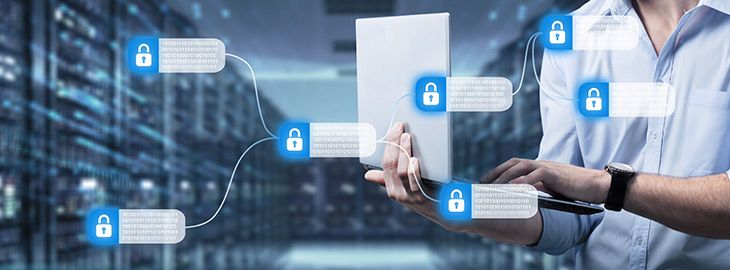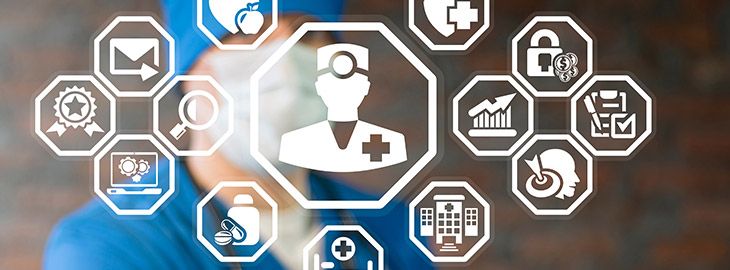
A supply chain is the ecosystem of processes, systems, and entities that work together to transform an idea into a final product and customer-ready offering. That lifecycle consists of multiple moving parts.
As global supply chain complexity increases, organizations in every industry require robust and reliable supply chain management (SCM) tools, processes, and people. Coordination of the supply chain is critical for efficiency and optimization.
SCM spans the entire supply chain ecosystem. It involves every aspect, including purchasing, inventory management, production, distribution, logistics, shipping, vendor and distributor management, and information technology.
When done well, SCM integrates materials, product development, finance, facilities, technology, third parties, and even customers into a seamless system that is centrally managed and controlled. Effective SCM enables organizations to:
- Accelerate time-to-market
- Cut costs and improve profit margins
- Improve product and service quality
- Reduce the risks of recalls and lawsuits
- Improve customer experience and satisfaction
- Build a strong brand
- Improve relationships with all stakeholders, including third parties and customers
All in all, supply chain management plays a crucial role in streamlining supply chains and in helping organizations to achieve their key business objectives.
As technology advances and profit-pressures increase, organizations are transitioning from traditional supply chains to digital supply chains. While each one has advantages and disadvantages, the benefits of digital supply chain management continue to evolve and expand.
Traditional Supply Chain vs. Digital Supply Chain
Traditional Supply Chains
One way to compare traditional supply chains and digital supply chains is to think of the former as a largely static entity. Traditional supply chains are reactive. They operate on rules based on historical transactions. Traditional supply chains usually rely on standalone systems which function in siloes with little or no data-sharing.
These supply chains involve processes where a product evolves from the procurement of raw materials to production and delivery to the end customer. Thus, the key elements of traditional supply chains are:
- Procurement of raw materials
- Raw materials to manufacturing
- Manufacturing
- Distribution and shipping
- Sale
- Consumption
Traditional supply chains and SCM focus only on production and provision, not on customer needs. They also are not optimized and lack the “intelligence” to spot problems along the value chain quickly.
Even after a problem is identified, predicting its likely effects and finding a fix can require considerable time and effort. That delays production, introduces errors, and increases the time-to-market — all of which can harm customer satisfaction and corporate profits.
Other key disadvantages of traditional supply chains are:
- Limited visibility and lack of real-time data, which:
- Complicates performance analysis and ability to identify gaps
- Reduces accountability
- Slows down and reduces the quality of decision-making
- Impacts ROI
- Less agile and responsive to changing market conditions
- Higher cost of goods sold (COGS) and lower profits
Digital Supply Chains
In comparison, digital supply chains are dynamic and able to adapt quickly to changing circumstances (market disruptions, political turmoil, pandemics, and so forth). They function in real-time and are highly agile “value networks” with integrated systems and processes.
In these supply networks, contextual, relevant, and timely data from information technology (IT) and operational technology (OT) systems are integrated and readily available to every process in the ecosystem.
Key Elements
The key elements that differentiate a digital supply chain from a traditional supply chain are:
Technology
Digital supply chains incorporate modern processes, strategies, and technologies, including:
- Cloud computing and software-as-a-service (SaaS)
- Artificial intelligence (AI)
- Machine learning (ML)
- Natural language processing (NLP)
- Big data
- Business intelligence
- Virtual reality and augmented reality
- Robotics and robotic process automation (RPA)
- Internet of things (IoT)
These technologies offer automation and predictive analytics capabilities. Organizations are better equipped to improve time-to-market, anticipate and resolve problems quickly, shorten planning cycles, improve decision-making, and deliver value to all stakeholders. Digital supply chains are more resilient and adaptable to future challenges and opportunities.
Logistics Management
Today’s supply chains leverage cutting-edge logistics management software. Such solutions allow supply chain managers to plan, implement, control, and optimize the flow of goods and materials; all to minimize cost and maximize ROI.
Partnerships
Unlike traditional supply chains, digital supply chains are not standalone or static entities. They are interconnected, dynamic, and agile. They focus on building mutually beneficial partnerships and nurturing stakeholder relationships. Digital supply chain management is about collaborating and building alliances with supply chain partners to help optimize the entire value chain.
Customer Focus
Digital SCM is not just about bringing the product to the customer in a transactional way. It’s also about delivering value and building long-term customer relationships.
Further, digital supply chains don’t focus on a single node, shipment, or order optimization. Rather, they evaluate the entire supply chain as a whole, to achieve the highest possible levels of profit, service levels, and customer experience.
Drawbacks
Of course, digital supply chains are not perfect. Since they leverage internet-enabled digital technologies, they introduce an element of cybersecurity risk.
For example, IoT sensors and smart systems are vulnerable to cyberattacks and data breaches. Moreover, since digital supply chains are so well-connected, an attack or threat on one part of the network could propagate across the entire supply chain — sometimes all the way to the customer.
Another potential drawback is that upgrading your supply chain requires significant capital expenditure. Even though the returns are measurable, not every company can afford the initial investment in infrastructure and resources.
These issues, however, are not insurmountable; and they should not deter your digital transformation efforts. A sustainable supply chain plan is a must-have to protect your supply chain ecosystem.
Why Are Businesses Switching to a Digital Supply Chain?
A digital supply chain is characterized by a network of interconnected digital and technological enablers. These enablers simplify SCM and help companies better respond to and satisfy their customers’ evolving demands. Companies can now deliver products more quickly, offer more choices, and hyper-personalize to customers across various fulfillment channels.
Supply chain processes can be automated to save time, improve quality, reduce costs and working capital requirements, and boost profits. Traditional supply chains with manual, silo-based processes cannot deliver these benefits at the same level.
While the interconnected nature of a digital value chain results in greater complexity that organizations must manage to maintain stability and optimize outcomes, technology again comes to the rescue. Data-driven intelligent automation tools like AI, ML, NLP, and advanced analytics simplify planning and performance management in digital supply chains.
These tools also empower organizations to incorporate process automation, respond more quickly to customer demand and supply dynamics, and get better visibility into the entire supply chain. Visibility boosts accountability, enables organizations to identify operational disruptions, improves vendor performance, and optimizes profitability, ROI, and competitive advantage.
Up-to-date and real-time data is a key differentiating feature of digital supply chains. Supply chain managers can leverage data and transactional reporting to improve and optimize:
- Raw material flows
- Logistics
- Inventory
- Cashflow, expenses, and pricing
- Forecasting
- Supply and demand planning
- Resource planning
- Preventive maintenance
- Overall supply chain strategy
Digital supply chains offer the following additional benefits:
- Improved coordination and collaboration among stakeholders at every stage
- Faster issue identification, response, and remediation
- Support for ongoing disruptive innovation
- Improved predictions for planning, product quality, safety, and customer experiences
- Optimized inventory
- Lower cost of goods sold and higher profits
ZenGRC is Your Supply Chain Security Solution
In an early 2020 survey, 234 supply chain professionals said that implementing digital technologies and capabilities was a top priority for their organizations. Clearly, they see the inherent value in moving away from a traditional supply chain to a more robust, connected, and agile digital supply chain.
Furthermore, the rapid global changes from the COVID-19 pandemic have resulted in a need to build more resilient supply chains. The answer is in digital transformation and automation. Digital supply chains will continue to drive new and more profitable business models that generate tangible benefits for every stakeholder.
For organizations worried about cybersecurity risks in digital supply chains, ZenGRC provides an effective solution. This automated, integration-ready supply chain risk management platform helps reduce risk by improving visibility with a single source of truth. ZenGRC enables supply chain managers to manage risk across connections and third parties.
The platform includes automated task management, risk registers, heat maps, dashboards, data visualizations, and many other features for real-time risk monitoring, management, and remediation across the entire supply chain.
Schedule a demo today to see what ZenGRC can do for your organization.



